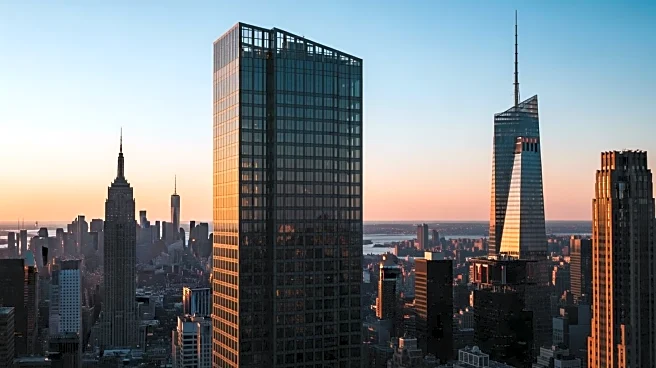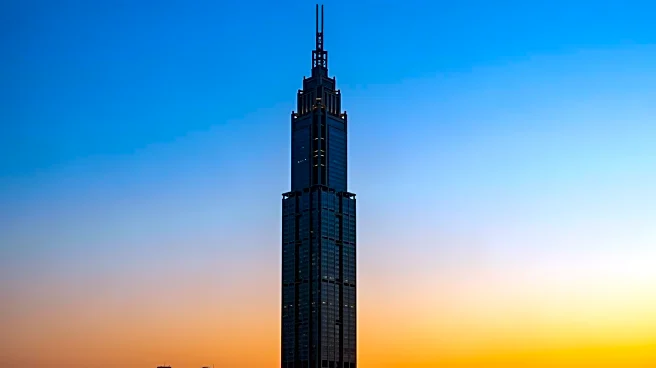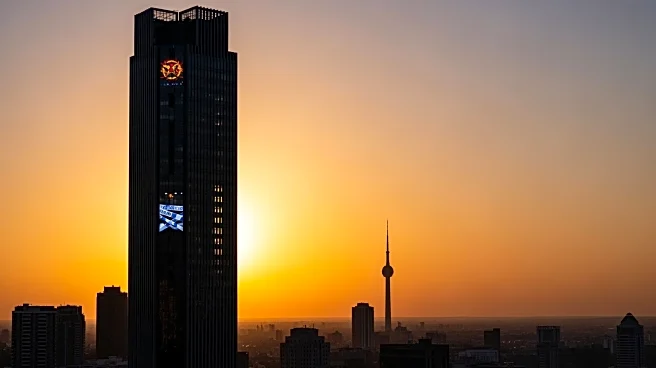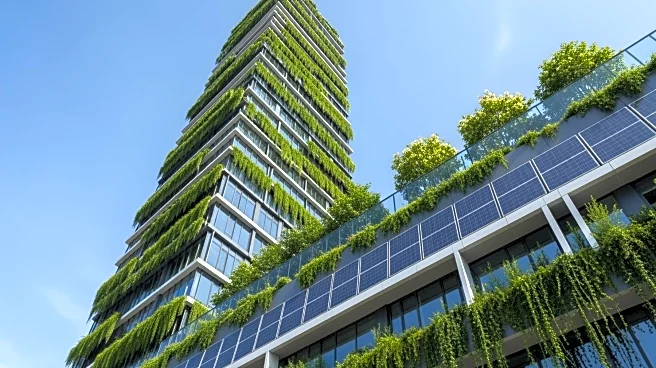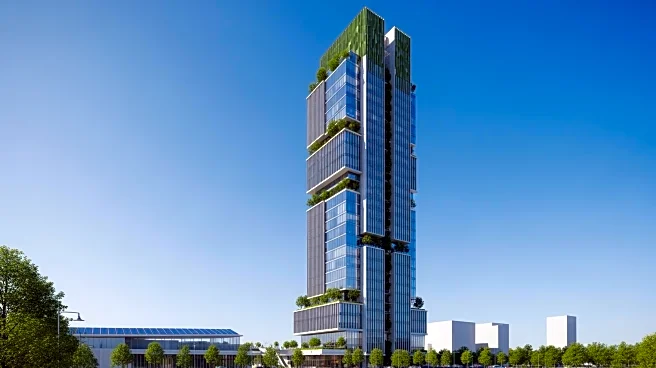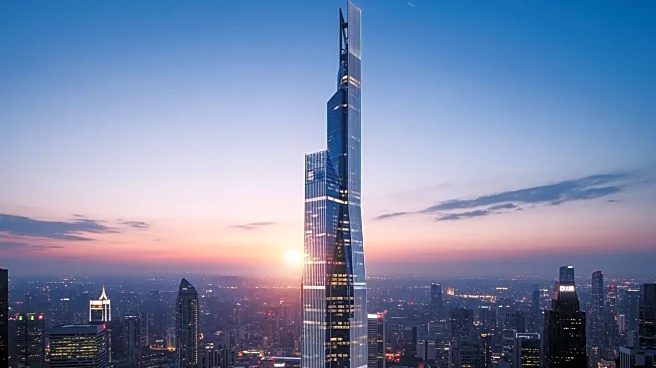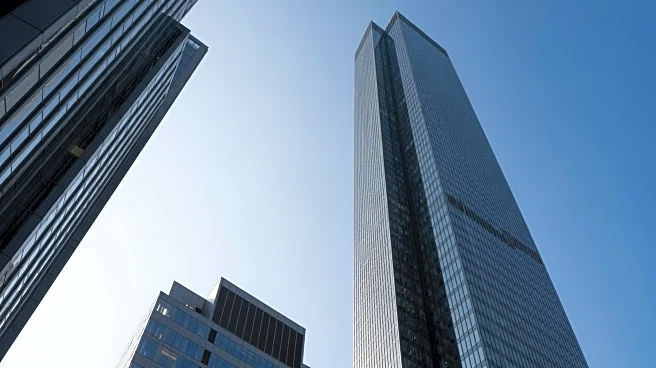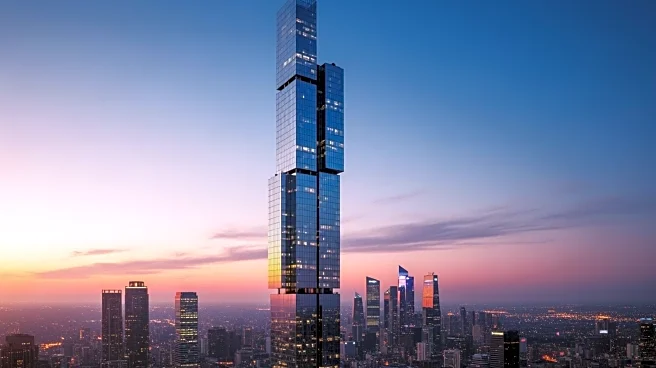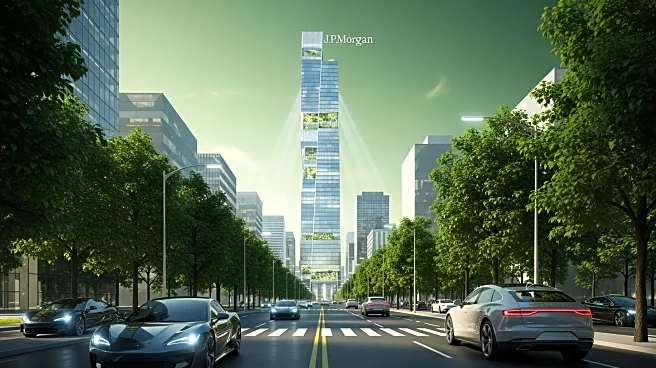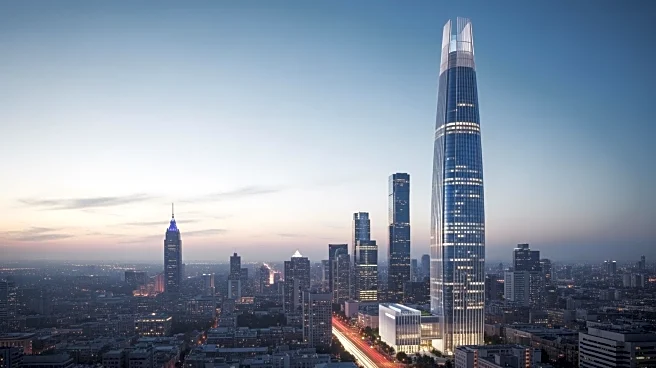What's Happening?
JPMorgan Chase has officially opened its new $3 billion headquarters at 270 Park Avenue in midtown Manhattan. The 60-story skyscraper, designed by British architect Lord Norman Foster, is a significant
addition to New York City's skyline and a testament to the bank's commitment to the city as a global financial hub. The building, which took six years to complete, features state-of-the-art amenities including a fitness center, onsite medical services, and a 19-restaurant food hall. It also incorporates advanced environmental features, such as being all-electric and having indoor lighting that syncs with the human body's circadian rhythm. The headquarters will house a significant portion of JPMorgan's 24,000-person workforce in New York City.
Why It's Important?
The completion of JPMorgan's new headquarters is a major vote of confidence in New York City's status as the financial capital of the world, especially following the economic challenges posed by the pandemic. The project underscores the bank's long-term commitment to the city and its role in the global financial system. For New York, the building represents a significant boost to the real estate market and a symbol of recovery and resilience. The investment also highlights the ongoing importance of physical office spaces in an era increasingly dominated by remote work, suggesting a balanced future for corporate real estate.
What's Next?
JPMorgan is not stopping with the completion of its new headquarters. The bank plans to invest $1 billion in renovating its temporary headquarters at 383 Madison Avenue. Additionally, it is considering the future use of a recently acquired building at 250 Park Avenue, which could be converted into more office space or a hotel. These projects indicate JPMorgan's continued expansion and investment in New York City, reinforcing its position as a leading financial institution.
Beyond the Headlines
The new headquarters is not just a building but a symbol of JPMorgan's legacy and influence in the financial sector. It reflects CEO Jamie Dimon's vision and leadership, as well as the bank's historical ties to New York City, dating back over two centuries. The building's design and amenities also highlight a growing trend in corporate real estate towards creating workspaces that prioritize employee well-being and sustainability.
